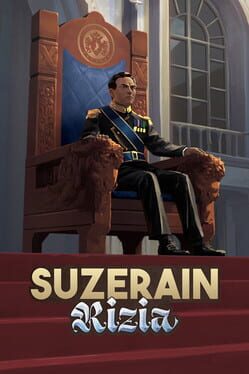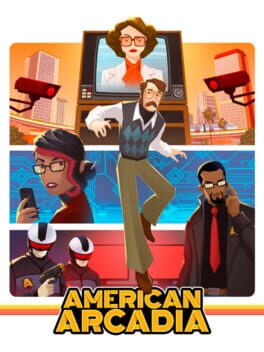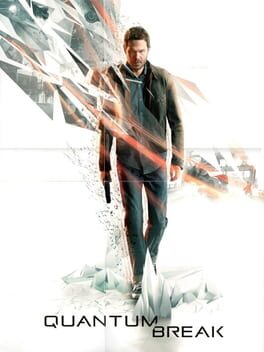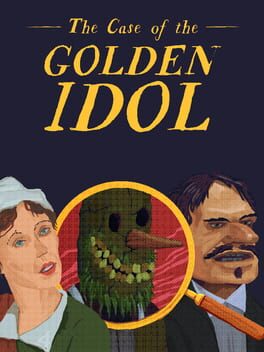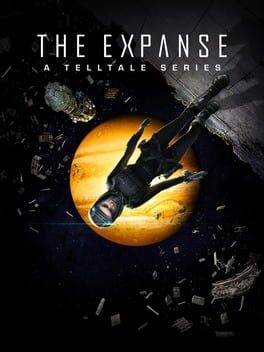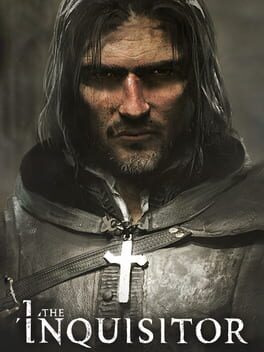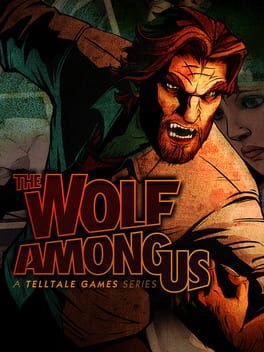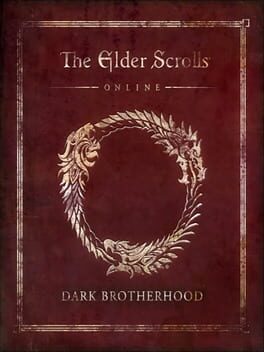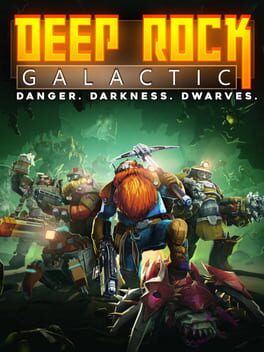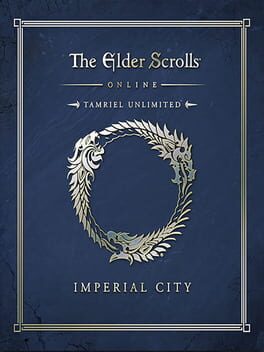Chieftah
This review contains spoilers
I must say this was an even more enjoyable experience that the base game. I am slightly biased because I replayed the main game just before (so I might be influenced by slight boredom from knowing what happened in Sordland), but this is such a breath of fresh air!
First of all, Sordland was an experience of coming into this poor, turmoil-ridden ****hole of a country, and forging your path from nothing. Are you going to turn it into a dictatorship? Convert it into a socialist dystopia? Try to appease everyone and work together (only for it to fall one way or another due to neverending, constant bickering between literally everyone?). This was very fun, and very creative, but it had a constant, ever-present shade of despair. It felt like nothing you try to do ever goes right, there's always twice as many people who are against you, and every single choice comes with an increasingly heavy cost for you, the public opinion, the economy, your relations or all of them together.
Here, in Rizia, you play as a monarch, and you begin your playthrough from a stable, firm position of power. The monarchy is fixed, the living conditions are okay, the populace is content, and everything seems rather fine. The challenge comes from deciding on (and sticking to) a path for the kingdom (reform? continued tradition? something else?), and then maintaining the relative peace and boredom of the kingdom without fucking it all up. This is a good, welcome twist to the power dynamic from the base game, that offers a lot of different approaches to problems. The story just felt smoother and less miserable than the base game.
I think the writing also peaked - it was far more interesting than the base game, the characters were nice and entertaining, each with a lot of fun twists to explore. The various events around the world are also very nicely crafted, offering just the right degree of constant tension (and immense satisfaction when your constant galore of appeasement/intimidation/manipulation/diplomacy actually works out in your favor. I am a bit spoiled because I managed to clutch probably the best ending of all (no spoilers), so your mileage may vary in the end.
The game also improves on the country management side - there are three understandable metrics to follow, each now having defined values instead of the confusing "economy trend line" that practically no one understands from the base game. Here, you can actually see what influences your results (as you should, there's an entire country worth of analysts to provide that info for you - damn you Rayne), and the inclusion of royal edicts allows you to induce some changes in the system without requiring separate dialogue screens for each - this means more possible changes, and more freedom for the player to balance the metrics. The war minigame is also amazing, but I haven't tried it myself (peaceful playthrough), but I would love to replay just to be able to enjoy it.
The ONLY negative thing this game has is Torpor Mode. Why is this even an option?? The game tells you that it saves after every "event" but a new save game is generated only after each turn, meaning that I lost around 30 mins of progress on several occasions just from forgetting about this nonsense. Why, why do games keep putting worthless save-game limitations in a single-player experience? Especially in a game that is essentially a dialogue choice tree with pictures??
To conclude: this is a brilliant, much-improved addition to the Suzerain universe. IMO it is better than the base game, and I am eagerly awaiting for more content (possibly a DLC involving an operation against Smolak, I hate that guy)
First of all, Sordland was an experience of coming into this poor, turmoil-ridden ****hole of a country, and forging your path from nothing. Are you going to turn it into a dictatorship? Convert it into a socialist dystopia? Try to appease everyone and work together (only for it to fall one way or another due to neverending, constant bickering between literally everyone?). This was very fun, and very creative, but it had a constant, ever-present shade of despair. It felt like nothing you try to do ever goes right, there's always twice as many people who are against you, and every single choice comes with an increasingly heavy cost for you, the public opinion, the economy, your relations or all of them together.
Here, in Rizia, you play as a monarch, and you begin your playthrough from a stable, firm position of power. The monarchy is fixed, the living conditions are okay, the populace is content, and everything seems rather fine. The challenge comes from deciding on (and sticking to) a path for the kingdom (reform? continued tradition? something else?), and then maintaining the relative peace and boredom of the kingdom without fucking it all up. This is a good, welcome twist to the power dynamic from the base game, that offers a lot of different approaches to problems. The story just felt smoother and less miserable than the base game.
I think the writing also peaked - it was far more interesting than the base game, the characters were nice and entertaining, each with a lot of fun twists to explore. The various events around the world are also very nicely crafted, offering just the right degree of constant tension (and immense satisfaction when your constant galore of appeasement/intimidation/manipulation/diplomacy actually works out in your favor. I am a bit spoiled because I managed to clutch probably the best ending of all (no spoilers), so your mileage may vary in the end.
The game also improves on the country management side - there are three understandable metrics to follow, each now having defined values instead of the confusing "economy trend line" that practically no one understands from the base game. Here, you can actually see what influences your results (as you should, there's an entire country worth of analysts to provide that info for you - damn you Rayne), and the inclusion of royal edicts allows you to induce some changes in the system without requiring separate dialogue screens for each - this means more possible changes, and more freedom for the player to balance the metrics. The war minigame is also amazing, but I haven't tried it myself (peaceful playthrough), but I would love to replay just to be able to enjoy it.
The ONLY negative thing this game has is Torpor Mode. Why is this even an option?? The game tells you that it saves after every "event" but a new save game is generated only after each turn, meaning that I lost around 30 mins of progress on several occasions just from forgetting about this nonsense. Why, why do games keep putting worthless save-game limitations in a single-player experience? Especially in a game that is essentially a dialogue choice tree with pictures??
To conclude: this is a brilliant, much-improved addition to the Suzerain universe. IMO it is better than the base game, and I am eagerly awaiting for more content (possibly a DLC involving an operation against Smolak, I hate that guy)
2022
2023
Everyone knows this is based incredibly heavily off Truman Show, but even though I could see their inspiration from a mile away, it was enjoyable.
I especially liked the switching between the "interview" and the "action" - great way to make the narrative seem interesting. The town and its premise were also nice.
I can't say it was fun to do segments where I had to control both characters at one - one non-spoilery segment, for example, required me to control the protagonist using one set of buttons, and simultaneously control a different character (that controls a CCTV camera) - the idea behind it is good, but it requires a lot of fast micromanagement, to the point where it is detrimental to the fun.
I especially liked the switching between the "interview" and the "action" - great way to make the narrative seem interesting. The town and its premise were also nice.
I can't say it was fun to do segments where I had to control both characters at one - one non-spoilery segment, for example, required me to control the protagonist using one set of buttons, and simultaneously control a different character (that controls a CCTV camera) - the idea behind it is good, but it requires a lot of fast micromanagement, to the point where it is detrimental to the fun.
2016
Let's start with the good bits:
+ There is a very distinct Remedy touch to the world - it's a little bit sarcastic, a little bit wacky (very faint in this game), and it's got all the hallmark elements of a Sam Lake production - the live action, the actors, the episodic construction, the music and the twisting storyline.
+ The gameplay loop is a surprisingly simple one (coming from AW2, it felt a bit boring) - you shoot dudes and then do some simple environmental puzzles. Regardless, it never felt too frustrating, or pointless.
Cons:
- The game really suffers from its game-TV show duality, which feels disjointed and pulls you out of the game. Where, in AW2, the live action sequences were meticulously interspersed between the narrative, and each felt unique and unpredictable, here it's just a very structured, very methodical B-roll action movie, spat out in your face after every act of the game, in insane 30-minute lengths. Even worse, you can't download the videos, so you better hope to God that Microsoft servers aren't thinking of taking a break right when you want to watch the videos. Thankfully, the story presented in the "tv show" is not very consequential, and is just more garnish. Also, it's really not that interesting. Woah, the main selling point of the game is that my decisions make a difference in a LIVE ACTION TV SHOW? Like come on, you just make a few different scenes and suddenly it's a genius invention?
- The game's storyline is surprisingly simple. Yeah, you got the crazy elements - a time machine, literal fracture and end of time, all of that jazz, but where Alan Wake retains a constant mystery, and slowly nurtures the player by feeding him/her bitesized pieces of lore, Quantum Break basically explains the entire framework behind the time problem in maybe first fourty minutes, and the story never really develops from there. The rest is just generic character drama, and it's not so much about the time, but about the characters and their desires.
- I didn't feel like the game allowed most of its main star actors to really flesh their characters out. The only exception is the perfect Aidan Gillen, and maybe, to some extent, William. The main character is a generic dude character with very little in terms of uniqueness, and the others all look like they jumped out of a literal B-grade action movie that plays on some 6th-8th channel on TV, at 10pm weekdays.
- Finally, and this is really where I snapped and decided to shelve the game, is the game's atrocious save system. Unless the game has a gameplay reason to restrict manual saving (e.g., presenting actual challenge, impossibility due to live action) or anything else, then it at least, at the very least, present a way to save the game at set locations (like what AW2 does - not ideal, but it makes for a challenging world, and gives you a clear indication of pacing). Here, the game saves...whenever? There's no manual saving, and some of the save spots are incredibly moronic. There's one bit where you have to cross a bridge jumping platform-to-platform, and I missed once, which brought me about 10 minutes back in the storyline - forcing me to fight through a miniboss battle, watch a cutscene, and walk the entire bridge across just to arrive at the place where I fell. After it happened the second time, I gave up. If the game doesn't respect my time, I sure ain't going to respect its time. Fuck this.
Overall, it's a mostly decent experience, but it could do without the tv show.
+ There is a very distinct Remedy touch to the world - it's a little bit sarcastic, a little bit wacky (very faint in this game), and it's got all the hallmark elements of a Sam Lake production - the live action, the actors, the episodic construction, the music and the twisting storyline.
+ The gameplay loop is a surprisingly simple one (coming from AW2, it felt a bit boring) - you shoot dudes and then do some simple environmental puzzles. Regardless, it never felt too frustrating, or pointless.
Cons:
- The game really suffers from its game-TV show duality, which feels disjointed and pulls you out of the game. Where, in AW2, the live action sequences were meticulously interspersed between the narrative, and each felt unique and unpredictable, here it's just a very structured, very methodical B-roll action movie, spat out in your face after every act of the game, in insane 30-minute lengths. Even worse, you can't download the videos, so you better hope to God that Microsoft servers aren't thinking of taking a break right when you want to watch the videos. Thankfully, the story presented in the "tv show" is not very consequential, and is just more garnish. Also, it's really not that interesting. Woah, the main selling point of the game is that my decisions make a difference in a LIVE ACTION TV SHOW? Like come on, you just make a few different scenes and suddenly it's a genius invention?
- The game's storyline is surprisingly simple. Yeah, you got the crazy elements - a time machine, literal fracture and end of time, all of that jazz, but where Alan Wake retains a constant mystery, and slowly nurtures the player by feeding him/her bitesized pieces of lore, Quantum Break basically explains the entire framework behind the time problem in maybe first fourty minutes, and the story never really develops from there. The rest is just generic character drama, and it's not so much about the time, but about the characters and their desires.
- I didn't feel like the game allowed most of its main star actors to really flesh their characters out. The only exception is the perfect Aidan Gillen, and maybe, to some extent, William. The main character is a generic dude character with very little in terms of uniqueness, and the others all look like they jumped out of a literal B-grade action movie that plays on some 6th-8th channel on TV, at 10pm weekdays.
- Finally, and this is really where I snapped and decided to shelve the game, is the game's atrocious save system. Unless the game has a gameplay reason to restrict manual saving (e.g., presenting actual challenge, impossibility due to live action) or anything else, then it at least, at the very least, present a way to save the game at set locations (like what AW2 does - not ideal, but it makes for a challenging world, and gives you a clear indication of pacing). Here, the game saves...whenever? There's no manual saving, and some of the save spots are incredibly moronic. There's one bit where you have to cross a bridge jumping platform-to-platform, and I missed once, which brought me about 10 minutes back in the storyline - forcing me to fight through a miniboss battle, watch a cutscene, and walk the entire bridge across just to arrive at the place where I fell. After it happened the second time, I gave up. If the game doesn't respect my time, I sure ain't going to respect its time. Fuck this.
Overall, it's a mostly decent experience, but it could do without the tv show.
Wow! I honestly did not expect to like this game this much. I am a fan of games like Return of Obra Dinn, but initially found the artstyle a bit too harsh for my tastes, and the more-traditional point and click style of interaction was also not that appealing to me.
I have to say I was wrong to assume the game was boring - it is a nicely crafted detective adventure that takes you through a chronological journey that slowly, but surely becomes more and more evil. Impressive and very fun!
I have to say I was wrong to assume the game was boring - it is a nicely crafted detective adventure that takes you through a chronological journey that slowly, but surely becomes more and more evil. Impressive and very fun!
Very short (really, just 4-5 hours) Telltale adventure that has no purpose in being an episodic game.
I enjoyed the updated character models. There's still a distinct "cartoonish" look, but the facial animations are much improved, and also partly helped by real actors mocapping them.
The entire game is a good, although unimportant prequel short story to the events in The Expanse. As is usual with prequels in this format, there's little of importance that can happen, as characters are confined to their future plotlines.
A decent pacing is kept throughout, but it never really goes anywhere. The main "villain" ended up being not that interesting at all, and the "turncloak" was not developed into its full potential. Despite that, I enjoyed Drummer more than in the TV show, and discovered a newfound appreciation for her character.
The additional episode "Archangel" has no connection to the previous episodes, and is completely inconsequential. Similarly, it acts as a tiny prequel story to the events in the books/tv show.
I enjoyed the updated character models. There's still a distinct "cartoonish" look, but the facial animations are much improved, and also partly helped by real actors mocapping them.
The entire game is a good, although unimportant prequel short story to the events in The Expanse. As is usual with prequels in this format, there's little of importance that can happen, as characters are confined to their future plotlines.
A decent pacing is kept throughout, but it never really goes anywhere. The main "villain" ended up being not that interesting at all, and the "turncloak" was not developed into its full potential. Despite that, I enjoyed Drummer more than in the TV show, and discovered a newfound appreciation for her character.
The additional episode "Archangel" has no connection to the previous episodes, and is completely inconsequential. Similarly, it acts as a tiny prequel story to the events in the books/tv show.
2024
It's an interesting, seldom explored idea of vengeful Christ and a vengeful religious world. Unique artistic interpretation, reminiscent in a way of the dark Spanish gothic seen in Blasphemous, or the grimdarkness of Bloodborne. Although, it does sound a bit stupid, considering Christ as a religious figure is completely anathemous to the entire idea of revenge, but hey - fiction is fiction.
Sadly, as much as I would love to explore this game, it's impossible to play. The game released in a garbage state - in only one hour of gameplay, I received around 3 complete freezes, the game is very unoptimized to the point where it only manages around 40 fps in the "fair scene" early on, in a system with 4060Ti 16GB and 5600X - more than enough for a game like that. The characters also stench of extreme jank - every cutscene and dialogue has an awkward little pause between every line or action, as if the game is rummaging through pages of script to find the right next line every single time. It's very hideous, and while it might be somewhat excusable back in the days of Risen and Gothic, it's certainly not excusable for a game created in 2024 and costing 40 euros.
Sadly, as much as I would love to explore this game, it's impossible to play. The game released in a garbage state - in only one hour of gameplay, I received around 3 complete freezes, the game is very unoptimized to the point where it only manages around 40 fps in the "fair scene" early on, in a system with 4060Ti 16GB and 5600X - more than enough for a game like that. The characters also stench of extreme jank - every cutscene and dialogue has an awkward little pause between every line or action, as if the game is rummaging through pages of script to find the right next line every single time. It's very hideous, and while it might be somewhat excusable back in the days of Risen and Gothic, it's certainly not excusable for a game created in 2024 and costing 40 euros.
2021
I sincerely want to like the idea behind the game, and it does get some points from me for partially realizing that idea.
It is, at its heart, an arcade racing game, set in an unequivocally gorgeous setting, with an absolute metric ton of cars that can be customized to your heart's desire. The challenges are fun, and it offers great difficulty customization depending on your skill.
It looks and plays great. The problems lie in EVERYTHING else that this game is trying to be. It is NOT a good story game. It is NOT a fun story game. It is NOT a TDU-style life sim. It is NOT an edgy wacky racer game.
Each and every character in this game is so frustratingly boring, so annoying and pretentious, that I (at times) wished I could just take the heaviest car possible and drive all over them so that they would shut the fuck up. There's so many unskippable bullshit cutscenes at each and every story beat, where these pretentious corpo drones are spewing minutes upon minutes of garbage script, all heavily embellished with terrible jokes that still stink of last day's conversation by the office watercooler.
To make things worse, the cutscenes are mostly unskippable, so God save your soul if you wish to just relax and have a nice race somewhere - no no - you have to sit through this absolute garbage storyline that serves absolutely ZERO purpose just to race around the track for 3 laps.
It is, at its heart, an arcade racing game, set in an unequivocally gorgeous setting, with an absolute metric ton of cars that can be customized to your heart's desire. The challenges are fun, and it offers great difficulty customization depending on your skill.
It looks and plays great. The problems lie in EVERYTHING else that this game is trying to be. It is NOT a good story game. It is NOT a fun story game. It is NOT a TDU-style life sim. It is NOT an edgy wacky racer game.
Each and every character in this game is so frustratingly boring, so annoying and pretentious, that I (at times) wished I could just take the heaviest car possible and drive all over them so that they would shut the fuck up. There's so many unskippable bullshit cutscenes at each and every story beat, where these pretentious corpo drones are spewing minutes upon minutes of garbage script, all heavily embellished with terrible jokes that still stink of last day's conversation by the office watercooler.
To make things worse, the cutscenes are mostly unskippable, so God save your soul if you wish to just relax and have a nice race somewhere - no no - you have to sit through this absolute garbage storyline that serves absolutely ZERO purpose just to race around the track for 3 laps.
2013
An incredible Telltale game. The only really bad thing I could say is the inherently "blueballing" nature of episodic games. Yes, it works for TV shows where screentime is very finite and very costly, but when games casually rack up 100+ hours in story, forcefully dividing a video game into chunks that players have to wait for is...frustrating. I'm not against dividing the game into episodes to segment the story (like what Alan Wake does), but against releasing it at different times.
This nitpick aside, this is a lovely story. A great classic noir detective story wrapped in a great setting, with amazing characters. Really aims to question your morality at times, and is very enjoyable throughout.
Some might say it is the ONLY truly good Telltale game...I don't dare to disagree...
This nitpick aside, this is a lovely story. A great classic noir detective story wrapped in a great setting, with amazing characters. Really aims to question your morality at times, and is very enjoyable throughout.
Some might say it is the ONLY truly good Telltale game...I don't dare to disagree...
Reviewed after ~13 hours of gameplay. Zone storyline complete, all non-daily sidequests, exploration achievements and Litany of Blood completed.
One of the most useful DLCs out there. If there was one DLC I had to call essential to the base game, it’s this. The introduction of assassination is a game changer, and greatly increases the fun of the game, especially if you’re playing with a sneaky character.
The zone storyline is fun, I love the environment and the city of Anvil, so it was a nice, nostalgic dive back to an area I last visited in…2009? Contrary to the latter chapters and DLCs, I am enjoying the fact that this DLC includes a grounded, localized storyline that does not involve saving the world in one way or another.
The Dark Brotherhood lore is somewhat expanded, and the sanctuary looks beautiful. That being said, the story felt much shorter, and there was a real lack of side quests. The daily activities are fun, but just as with heists in Thieves Guild DLC, they get repetitive very quickly, and once you’ve tried it once, you’ve tried it all. There are more of them here than in Thieves Guild, though.
Storyline and lore: 4/5. Decent storyline with interesting characters that are somewhat lacking depth (especially compared to its direct competitor – the Thieves Guild from the previous DLC).
Environment: 5/5. A truly serene Mediterranean-inspired region, and both cities are gorgeous to walk through.
Gameplay and activities: 5/5. The single most essential DLC out there due to the introduction of assassination. Other skills are useful, but nothing comes close to the sheer power of just one-killing enemies from behind.
Music: 4/5. Nothing incredibly memorable, but most tracks include string instruments – something that is not widely used in other tracks across the Elder Scrolls franchise. That makes this soundtrack stand out from the rest.
One of the most useful DLCs out there. If there was one DLC I had to call essential to the base game, it’s this. The introduction of assassination is a game changer, and greatly increases the fun of the game, especially if you’re playing with a sneaky character.
The zone storyline is fun, I love the environment and the city of Anvil, so it was a nice, nostalgic dive back to an area I last visited in…2009? Contrary to the latter chapters and DLCs, I am enjoying the fact that this DLC includes a grounded, localized storyline that does not involve saving the world in one way or another.
The Dark Brotherhood lore is somewhat expanded, and the sanctuary looks beautiful. That being said, the story felt much shorter, and there was a real lack of side quests. The daily activities are fun, but just as with heists in Thieves Guild DLC, they get repetitive very quickly, and once you’ve tried it once, you’ve tried it all. There are more of them here than in Thieves Guild, though.
Storyline and lore: 4/5. Decent storyline with interesting characters that are somewhat lacking depth (especially compared to its direct competitor – the Thieves Guild from the previous DLC).
Environment: 5/5. A truly serene Mediterranean-inspired region, and both cities are gorgeous to walk through.
Gameplay and activities: 5/5. The single most essential DLC out there due to the introduction of assassination. Other skills are useful, but nothing comes close to the sheer power of just one-killing enemies from behind.
Music: 4/5. Nothing incredibly memorable, but most tracks include string instruments – something that is not widely used in other tracks across the Elder Scrolls franchise. That makes this soundtrack stand out from the rest.
Reviewed after ~20 hours of gameplay. Zone story and all side quests completed, all points of interest explored and completed, many achievements including Kari’s Hit List collectible hunt completed, some repeatable/daily missions also done. Maw of Lorkhaj was only visited to grasp the story, but not started.
I LOVE this DLC. Yes, it’s way smaller than even Gold Coast that released after it, but it’s got a whole lot of soul.
First of all, this is so far the only DLC set in Hammerfell. Understandably so, since it’s all but confirmed that TES VI is going to be set in Hammerfell, Bethesda told Zenimax to stay out of their turf and this was their last foray into the home of the Redguards. Beautiful washed rocks, an environment that feels scorching and by far one of the most beautiful cities in ESO.
Let’s talk about Abah’s Landing. This IS what Sentinel WAS supposed to look like. It’s massive, dense, detailed and unique on every corner. From the shady docks to the bustling market streets, all the way to the noble townhouses and the palace. Even after trying so many other DLCs after this one (on my first playthrough), Abah’s Landing remains one of those towns that I keep returning to – incredible feeling of immersion there.
The zone story is somewhat dull around the corners. It’s got some great characters but the overall premise is somewhat uninteresting and (as is sadly true with most ESOs storylines) you can spot the twist from 15 miles away. I don’t know if it’s their “keep it simple, stupid” attitude, or their inability to concoct complex storylines, or their attempt to maintain a sense of “fable-like storytelling”, but come ooon.
Besides the zone story, the other parts of the area are beautiful and offer a great, albeit small expansion into Redguard lore.
Storyline and lore: 3/5. Somewhat dull story with great characters and a very cozy Thieves Den.
Environment: 5/5. One of the most beautiful zones and one of the coziest cities.
Gameplay and activities: 4/5. Great introduction to thieving and sneaking, a myriad opportunities within the zone, but it was definitely less than the subsequent Dark Brotherhood DLC.
Music: 4/5. Perfect rendition of Nerevar Rising.
I LOVE this DLC. Yes, it’s way smaller than even Gold Coast that released after it, but it’s got a whole lot of soul.
First of all, this is so far the only DLC set in Hammerfell. Understandably so, since it’s all but confirmed that TES VI is going to be set in Hammerfell, Bethesda told Zenimax to stay out of their turf and this was their last foray into the home of the Redguards. Beautiful washed rocks, an environment that feels scorching and by far one of the most beautiful cities in ESO.
Let’s talk about Abah’s Landing. This IS what Sentinel WAS supposed to look like. It’s massive, dense, detailed and unique on every corner. From the shady docks to the bustling market streets, all the way to the noble townhouses and the palace. Even after trying so many other DLCs after this one (on my first playthrough), Abah’s Landing remains one of those towns that I keep returning to – incredible feeling of immersion there.
The zone story is somewhat dull around the corners. It’s got some great characters but the overall premise is somewhat uninteresting and (as is sadly true with most ESOs storylines) you can spot the twist from 15 miles away. I don’t know if it’s their “keep it simple, stupid” attitude, or their inability to concoct complex storylines, or their attempt to maintain a sense of “fable-like storytelling”, but come ooon.
Besides the zone story, the other parts of the area are beautiful and offer a great, albeit small expansion into Redguard lore.
Storyline and lore: 3/5. Somewhat dull story with great characters and a very cozy Thieves Den.
Environment: 5/5. One of the most beautiful zones and one of the coziest cities.
Gameplay and activities: 4/5. Great introduction to thieving and sneaking, a myriad opportunities within the zone, but it was definitely less than the subsequent Dark Brotherhood DLC.
Music: 4/5. Perfect rendition of Nerevar Rising.
Reviewed after ~35 hours of gameplay. Zone story and almost all side quests complete, all points of interest discovered and completed, both dungeons explored and partially beaten, Maelstrom Arena is sadly only half-done, but most exploration- and quest-based achievements complete.
Can’t say a single bad thing about this DLC. I wholeheartedly enjoyed it.
This is ESO’s first expansion-sized DLC, before their usual annual release schedule of expansion, DLC and two dungeons was even a thing. If this DLC would be released today, it would certainly be a chapter.
The environment is a somberly beautiful one. There are visible improvements in environmental design everywhere you go – areas are more fleshed out, interiors are more detailed and varied, and everything seems to “stick” better. This is in start contrast to the base game, where a lot of the zones looked like they were half-arsed and a set of 10 different assets for each “race” was near-randomly plopped everywhere you go.
Here, there is a very satisfying variety in subzones – from the frosty north, to a tundra-like Morkul Plain, all the way to the beautiful pine and spruce forests of the Frostbeak Ridge. Orsinium itself is a marvel to behold – the first city in ESO that FEELS like a city, and not a glorified MMO plaza with 5 oversized “buildings” surrounding it. I am glad that ESO (starting from Orsinium) embraced the fact that they are not – to no one’s surprise – a mainline TES game, and decided that they do not need to make every door openable, and every building enterable. This allows for a much denser, more beautiful cityscape, and one that feels a lot more interesting to explore as you discover small overlooks, balconies, little alleyways and whatnot.
The main story was fun and engaging, and thankfully never relied on a single gimmick to carry it through. A lot of the things that subsequent ESO releases have since taken for granted were first introduced here, so I am as much praising ESOs general DLC quality as I am praising this DLC in particular – the reliance on fetch and kill mechanics is drastically reduced, the quests are varied and do not follow a linear path through the zone as if you’re going through an amusement park, but leave significant areas for you to explore, the characters are fun to engage as well. Yeah, the plot twist is expectedly easy, but if you treat this story as something that you would read in a folk tale rather than a fantasy novel, you’ll be alright.
The side quests are also fun – especially Stibbons and Raynor/Kireth duo quests. Fun. There are also THANKFULLY finally achievement activities that aren’t based on dungeons, boss killing or angling. Loads of fun were had collecting the exhibits for the House of Orsimer Glories and jumping off the waterfall. A little bit less fun was had trying to find the solicitor and the fighter for those two annoying achievements. Failed that.
The two public dungeons are also engaging and diverse – especially Old Orsinium, which had a very thematically strong quest and overall atmosphere.
And obviously, the Maelstrom Arena is a great, unique addition to the game. An amazing way to test your solo skills in a fun and engaging game mode, also a great piece of worldbuilding in there as well.
Storyline and lore: 5/5. Ridiculously nice improvement to Orcish culture, nice quest variety.
Environment: 4/5. Diverse environments with lots of interesting discoveries to be made.
Gameplay and activities: 5/5. Amazing addition of Maelstrom Arena, nice collectable quest, nice dungeons.
Music: 4/5. Impressive at times.
Can’t say a single bad thing about this DLC. I wholeheartedly enjoyed it.
This is ESO’s first expansion-sized DLC, before their usual annual release schedule of expansion, DLC and two dungeons was even a thing. If this DLC would be released today, it would certainly be a chapter.
The environment is a somberly beautiful one. There are visible improvements in environmental design everywhere you go – areas are more fleshed out, interiors are more detailed and varied, and everything seems to “stick” better. This is in start contrast to the base game, where a lot of the zones looked like they were half-arsed and a set of 10 different assets for each “race” was near-randomly plopped everywhere you go.
Here, there is a very satisfying variety in subzones – from the frosty north, to a tundra-like Morkul Plain, all the way to the beautiful pine and spruce forests of the Frostbeak Ridge. Orsinium itself is a marvel to behold – the first city in ESO that FEELS like a city, and not a glorified MMO plaza with 5 oversized “buildings” surrounding it. I am glad that ESO (starting from Orsinium) embraced the fact that they are not – to no one’s surprise – a mainline TES game, and decided that they do not need to make every door openable, and every building enterable. This allows for a much denser, more beautiful cityscape, and one that feels a lot more interesting to explore as you discover small overlooks, balconies, little alleyways and whatnot.
The main story was fun and engaging, and thankfully never relied on a single gimmick to carry it through. A lot of the things that subsequent ESO releases have since taken for granted were first introduced here, so I am as much praising ESOs general DLC quality as I am praising this DLC in particular – the reliance on fetch and kill mechanics is drastically reduced, the quests are varied and do not follow a linear path through the zone as if you’re going through an amusement park, but leave significant areas for you to explore, the characters are fun to engage as well. Yeah, the plot twist is expectedly easy, but if you treat this story as something that you would read in a folk tale rather than a fantasy novel, you’ll be alright.
The side quests are also fun – especially Stibbons and Raynor/Kireth duo quests. Fun. There are also THANKFULLY finally achievement activities that aren’t based on dungeons, boss killing or angling. Loads of fun were had collecting the exhibits for the House of Orsimer Glories and jumping off the waterfall. A little bit less fun was had trying to find the solicitor and the fighter for those two annoying achievements. Failed that.
The two public dungeons are also engaging and diverse – especially Old Orsinium, which had a very thematically strong quest and overall atmosphere.
And obviously, the Maelstrom Arena is a great, unique addition to the game. An amazing way to test your solo skills in a fun and engaging game mode, also a great piece of worldbuilding in there as well.
Storyline and lore: 5/5. Ridiculously nice improvement to Orcish culture, nice quest variety.
Environment: 4/5. Diverse environments with lots of interesting discoveries to be made.
Gameplay and activities: 5/5. Amazing addition of Maelstrom Arena, nice collectable quest, nice dungeons.
Music: 4/5. Impressive at times.
2018
Reviewed after 10 hours of gameplay, one full complete assignment, second assignment underway (~12 individual missions through):
I can’t make up my mind what to think about this game. It seems to be everywhere and nowhere at once. The main gameplay loop involves you and 3 other players going on missions that take you to a randomly-generated underground cavern map and ask you to either mine a certain amount of specific materials, or complete special objectives (such as building a refinery, or beating a few bosses). It’s engaging, simple and challenging enough on higher difficulty to be fun enough to play with friends, but there’s a lot lacking.
First, there’s really barely any variety in the actual missions. No, it’s not “new content” if I have to mine another unobtainium, regardless of how many color varieties it comes with. The only real change was when missions started popping up that asked to build a refinery, or later to beat bosses. Surely there’s more unique objectives later on, but even these two that I mentioned have begun to repeat themselves. It quickly becomes mundane when you get another mission that yet again asks you to do one of few things.
There are four classes in the game, and surely the best way is for the 4-player group to each have a unique class, but even if you all go single class it isn’t impossible to beat missions either. However, I do not really see a lot of point in leveling several classes because they are mostly different in their single unique ability, but the rest is pretty much the same. The entire progression, to be honest, feels incredibly boring. It’s slow, tedious, and involves very slowly unlocking perks for your equipment, perks for your character to use (with a rather unforgiving system that wastes your points and only allows you to put 1-3 perks at once). There’s also cosmetic changes, but those are either even slower to unlock or involve buying cosmetic DLCs.
There’s a lot of fun dorkiness in the game, and you can see that heart and soul was put into making certain aspects of it feel simply fun – such as the lobby, where one can find numerous funny activities to pass time in. However, once you get your fill of pointless “fucking around” and start to think about the long term… there’s barely any of it. Sure – there’s an insane amount of content, but all of it comes in the form of these singular missions with very repetitive tasks (I think there’s 6 or 7 varieties of them total, spoiler oops), and the only difference is your ability to fight off monsters on harder difficulties. You do not feel like you’re progressing towards something, it’s just like a truck sim, you simply get one delivery after another with only slowly increasing numbers and distance.
I hope this game gets better, but as it stands now, 10 hours in is probably enough time to state that any further wait is not going to be entertaining. If you want simple, jolly fun with 3 of your friends, this is engaging, simple to grasp and really asks you to cooperate – great. If you’re looking for meaningful progression and variety, there’s very little.
Recap:
- Low mission variety, gets repetitive quickly.
- Very underwhelming progression.
+ Requires cooperation from all team members, great game for casual fun with friends.
+ Simple to grasp and can become challenging enough on harder difficulties.
+ Lots of fun side activities and features, such as dancing, drinking, shouting, barrel kick etc.
I can’t make up my mind what to think about this game. It seems to be everywhere and nowhere at once. The main gameplay loop involves you and 3 other players going on missions that take you to a randomly-generated underground cavern map and ask you to either mine a certain amount of specific materials, or complete special objectives (such as building a refinery, or beating a few bosses). It’s engaging, simple and challenging enough on higher difficulty to be fun enough to play with friends, but there’s a lot lacking.
First, there’s really barely any variety in the actual missions. No, it’s not “new content” if I have to mine another unobtainium, regardless of how many color varieties it comes with. The only real change was when missions started popping up that asked to build a refinery, or later to beat bosses. Surely there’s more unique objectives later on, but even these two that I mentioned have begun to repeat themselves. It quickly becomes mundane when you get another mission that yet again asks you to do one of few things.
There are four classes in the game, and surely the best way is for the 4-player group to each have a unique class, but even if you all go single class it isn’t impossible to beat missions either. However, I do not really see a lot of point in leveling several classes because they are mostly different in their single unique ability, but the rest is pretty much the same. The entire progression, to be honest, feels incredibly boring. It’s slow, tedious, and involves very slowly unlocking perks for your equipment, perks for your character to use (with a rather unforgiving system that wastes your points and only allows you to put 1-3 perks at once). There’s also cosmetic changes, but those are either even slower to unlock or involve buying cosmetic DLCs.
There’s a lot of fun dorkiness in the game, and you can see that heart and soul was put into making certain aspects of it feel simply fun – such as the lobby, where one can find numerous funny activities to pass time in. However, once you get your fill of pointless “fucking around” and start to think about the long term… there’s barely any of it. Sure – there’s an insane amount of content, but all of it comes in the form of these singular missions with very repetitive tasks (I think there’s 6 or 7 varieties of them total, spoiler oops), and the only difference is your ability to fight off monsters on harder difficulties. You do not feel like you’re progressing towards something, it’s just like a truck sim, you simply get one delivery after another with only slowly increasing numbers and distance.
I hope this game gets better, but as it stands now, 10 hours in is probably enough time to state that any further wait is not going to be entertaining. If you want simple, jolly fun with 3 of your friends, this is engaging, simple to grasp and really asks you to cooperate – great. If you’re looking for meaningful progression and variety, there’s very little.
Recap:
- Low mission variety, gets repetitive quickly.
- Very underwhelming progression.
+ Requires cooperation from all team members, great game for casual fun with friends.
+ Simple to grasp and can become challenging enough on harder difficulties.
+ Lots of fun side activities and features, such as dancing, drinking, shouting, barrel kick etc.
Reviewed after ~10 hours in the DLC zones - completed all quests, discovered all locations, did some world bosses. Also spent 2 hours in both DLC dungeons - Imperial Prison and White-Gold Tower.
I am playing all ESO DLCs in a chronological order, and this came first, right after I finished with my alliance quest and the main storyline of the base game.
Truth be told, I am glad they came to their senses and never attempted to repeat what they did with this DLC. PVP and PVE content rarely match, and especially so in a game where PVP is, and always will be, treated as a separate playstyle.
I do not mind doing side activities, achievement hunting or collectable scouring in a PVP zone – the constant threat of an enemy player ganking you, or a band of roving PVPers wiping you off the face of Tamriel when you turn a corner is an unmatched experience in ESO. It adds considerate danger and challenge to everything you are trying to do.
More so, Imperial City is completely different from Cyrodiil. In Cyrodiil, you can usually see enemies from miles away, riding down plain fields or attacking forts in groups. In the Imperial City (or the Sewers), enemies can appear almost immediately, from corners that you forgot to check or go around. Your only help is combat music that begins playing when an enemy player is nearby.
However, since the entire zone is PVP, so is its storyline. Besides that, the questline seems to be made for a casual solo player but requires significantly more experience than anything else in the game. In some instances, zone quests require you to fight off waves of enemies with bosses as challenging as world bosses. This means that unless you are a high-CP character with knowledge of the game’s systems, this storyline will, without a doubt, cause significant trouble.
And again, all of the combat encounters are also sprinkled with PVP on top. While you’re struggling to stay alive fighting off waves of bosses, a chance enemy player can easily come from behind and end your miserable 30-minute struggle with a story boss. To say it is annoying is an understatement.
The storyline itself is quite interesting lore-wise, but suffers from a very repetitive quest design, as each quest is clearly built around navigating a PVP zone and doing mostly combat encounters. A big diversion from quests in base game zones, as well as quests in later DLCs.
However, I must give props to the idea of the Imperial Sewers – a sprawling public dungeon space with PVP is exactly how the entire DLC should’ve looked like. No zone story, just messing around fighting bosses and players. The insane size of the zone means you rarely feel cramped against players, allowing you ample room to breathe and explore, but retaining the threat of someone coming around the corner.
Storyline and lore: 3/5 Mediocre. Good conclusion but bad integration with a PVP zone, and repetitive combat quests.
Environment: 4/5 Good. Interesting twist on Imperial City, and Sewers are both interesting and entertaining to explore. A bit too much trademark "Molag Balls purple" after Coldharbour, but what can you do right?
Gameplay and activities: 3/5 Mediocre (4/5 if I disregard bad mix of storyline and PVP). Fun PVP and PVE content when you're not trying to simply do the story. Weird choice to put a storyline.
Music: 3/5 Mediocre. Nothing impressive at all, mostly rehashed tracks.
I am playing all ESO DLCs in a chronological order, and this came first, right after I finished with my alliance quest and the main storyline of the base game.
Truth be told, I am glad they came to their senses and never attempted to repeat what they did with this DLC. PVP and PVE content rarely match, and especially so in a game where PVP is, and always will be, treated as a separate playstyle.
I do not mind doing side activities, achievement hunting or collectable scouring in a PVP zone – the constant threat of an enemy player ganking you, or a band of roving PVPers wiping you off the face of Tamriel when you turn a corner is an unmatched experience in ESO. It adds considerate danger and challenge to everything you are trying to do.
More so, Imperial City is completely different from Cyrodiil. In Cyrodiil, you can usually see enemies from miles away, riding down plain fields or attacking forts in groups. In the Imperial City (or the Sewers), enemies can appear almost immediately, from corners that you forgot to check or go around. Your only help is combat music that begins playing when an enemy player is nearby.
However, since the entire zone is PVP, so is its storyline. Besides that, the questline seems to be made for a casual solo player but requires significantly more experience than anything else in the game. In some instances, zone quests require you to fight off waves of enemies with bosses as challenging as world bosses. This means that unless you are a high-CP character with knowledge of the game’s systems, this storyline will, without a doubt, cause significant trouble.
And again, all of the combat encounters are also sprinkled with PVP on top. While you’re struggling to stay alive fighting off waves of bosses, a chance enemy player can easily come from behind and end your miserable 30-minute struggle with a story boss. To say it is annoying is an understatement.
The storyline itself is quite interesting lore-wise, but suffers from a very repetitive quest design, as each quest is clearly built around navigating a PVP zone and doing mostly combat encounters. A big diversion from quests in base game zones, as well as quests in later DLCs.
However, I must give props to the idea of the Imperial Sewers – a sprawling public dungeon space with PVP is exactly how the entire DLC should’ve looked like. No zone story, just messing around fighting bosses and players. The insane size of the zone means you rarely feel cramped against players, allowing you ample room to breathe and explore, but retaining the threat of someone coming around the corner.
Storyline and lore: 3/5 Mediocre. Good conclusion but bad integration with a PVP zone, and repetitive combat quests.
Environment: 4/5 Good. Interesting twist on Imperial City, and Sewers are both interesting and entertaining to explore. A bit too much trademark "Molag Balls purple" after Coldharbour, but what can you do right?
Gameplay and activities: 3/5 Mediocre (4/5 if I disregard bad mix of storyline and PVP). Fun PVP and PVE content when you're not trying to simply do the story. Weird choice to put a storyline.
Music: 3/5 Mediocre. Nothing impressive at all, mostly rehashed tracks.
This review is made for the base game only, taking into account the base game mechanics as well as the storylines that occur in base game zones.
All in all, this is one of the fairest and most decent MMOs out there. Yes, it has a microtransaction store, but at the end of the day, a massive server infrastructure and constant maintenance cannot be funded from thin air. Someone must pay. This is, as far as microtransaction systems in MMOs go, is a relatively fair system, offering cosmetic rewards such as mounts, costumes and housing furniture. Yes, there are items such as potions and XP boosts that can be bought with real money, but the solo PvE experience is so easy and hassle-free that there is little need of them, and challenging content will require a lot more than just a higher level or more potions (in fact, both will be rather useless).
To begin with, it must be admitted that I am a sucker for TES games. I love the world and its lore, so I try to greedily read and consume absolutely everything there is to consume about TES. For a very long time, I was skeptical of ESO – I am not a real fan of MMOs, I absolutely despise MMO grinding and level-gating, I did not think that a TES-like dialogue system and storytelling would match with a multiplayer environment, and I was rather afraid they’d ruin a relatively “pristine” lore of TES by introducing dumbed down lore explanations.
I am happy to admit that all of my worries turned out to be stupidity on my own part. This is probably the least grindy MMO out there – there is no level gating for story content (which includes practically ALL overland content minus world bosses) as everything is level-scaled, and (probably because of that) there are seldom any quests that are pure fetch-and-kills – usually they include a proper story that takes you places. That being said, I am somewhat saddened that most quests consists of talking to people, fighting enemies and interacting with objects by pressing E. Not a novel quest design philosophy.
The storytelling is obviously solo-focused, with characters clearly addressing you and you alone as the hero, but there are sometimes off putting moments when a nice dialogue can be ruined by having other players and their spells and their various nonsensical Daedric pets hovering around while you’re trying to figure out how many actual characters are in the room, and how many are just other players. It’s all a bit messy at times, but I could count on my fingers the total instances when that was a problem.
The overall gameplay is fun, there’s a TON of non-quest content to indulge in – world bosses, exploration, zone completion, lots of achievements, delves, public and instanced dungeons, crafting, PVP alliance war etc. Some new features and obviously a lot more of the same was added with subsequent DLCs and chapters (larger expansions).
Now let’s address the elephant in the room – the lore, story content and its overall quality in comparison to mainline TES games. As I mentioned, I was originally quite afraid of Zenimax and mistrusting of the sketchy lore additions that were all the rage back in the day in the TES lore community - things like THE Elder Scrolls (which are non-temporal uncountable divine pieces of knowledge of past and future events) being gamified to a literal capture-the-flag element that must be taken and held by a certain alliance to earn points.
However, once the initial rage settled and I slowly explored the zone stories, actually listened to dialogue, read the new lorebooks and (most importantly) indulged in side quests, I came to respect ESO a lot more. They have both the required knowledge and the willingness to expand TES lore in a meaningful way. Yes, this is not mainline Elder Scrolls – it will never, not until Todd Howard flops TES VI and bankrupts BGS, interfere with certain lore beats that push the overarching story forward. This is your encyclopedia to a historical novel – it’s filled to the brim with text, dialogue and in-depth knowledge about the various cultures, places and races of Nirn, and it is a perfect, even essential, companion to the mainline games, but it will always be an encyclopedic type of worldbuilding, in comparison to a groundbreaking, plottwisting mainline TES games. ESO is interpolating, mainline TES is extrapolating.
However, even THAT is not really a good explanation, as there are plenty of examples in later DLCs that not only paints within the canvas, but extends the canvas altogether. I think, over time, Bethesda gave more and more freedom to writers and the lead loremaster of ESO, and they clearly should – especially with the unclear success of future TES games, as evident from lukewarm reception of Starfield.
All in all, this is one of the fairest and most decent MMOs out there. Yes, it has a microtransaction store, but at the end of the day, a massive server infrastructure and constant maintenance cannot be funded from thin air. Someone must pay. This is, as far as microtransaction systems in MMOs go, is a relatively fair system, offering cosmetic rewards such as mounts, costumes and housing furniture. Yes, there are items such as potions and XP boosts that can be bought with real money, but the solo PvE experience is so easy and hassle-free that there is little need of them, and challenging content will require a lot more than just a higher level or more potions (in fact, both will be rather useless).
To begin with, it must be admitted that I am a sucker for TES games. I love the world and its lore, so I try to greedily read and consume absolutely everything there is to consume about TES. For a very long time, I was skeptical of ESO – I am not a real fan of MMOs, I absolutely despise MMO grinding and level-gating, I did not think that a TES-like dialogue system and storytelling would match with a multiplayer environment, and I was rather afraid they’d ruin a relatively “pristine” lore of TES by introducing dumbed down lore explanations.
I am happy to admit that all of my worries turned out to be stupidity on my own part. This is probably the least grindy MMO out there – there is no level gating for story content (which includes practically ALL overland content minus world bosses) as everything is level-scaled, and (probably because of that) there are seldom any quests that are pure fetch-and-kills – usually they include a proper story that takes you places. That being said, I am somewhat saddened that most quests consists of talking to people, fighting enemies and interacting with objects by pressing E. Not a novel quest design philosophy.
The storytelling is obviously solo-focused, with characters clearly addressing you and you alone as the hero, but there are sometimes off putting moments when a nice dialogue can be ruined by having other players and their spells and their various nonsensical Daedric pets hovering around while you’re trying to figure out how many actual characters are in the room, and how many are just other players. It’s all a bit messy at times, but I could count on my fingers the total instances when that was a problem.
The overall gameplay is fun, there’s a TON of non-quest content to indulge in – world bosses, exploration, zone completion, lots of achievements, delves, public and instanced dungeons, crafting, PVP alliance war etc. Some new features and obviously a lot more of the same was added with subsequent DLCs and chapters (larger expansions).
Now let’s address the elephant in the room – the lore, story content and its overall quality in comparison to mainline TES games. As I mentioned, I was originally quite afraid of Zenimax and mistrusting of the sketchy lore additions that were all the rage back in the day in the TES lore community - things like THE Elder Scrolls (which are non-temporal uncountable divine pieces of knowledge of past and future events) being gamified to a literal capture-the-flag element that must be taken and held by a certain alliance to earn points.
However, once the initial rage settled and I slowly explored the zone stories, actually listened to dialogue, read the new lorebooks and (most importantly) indulged in side quests, I came to respect ESO a lot more. They have both the required knowledge and the willingness to expand TES lore in a meaningful way. Yes, this is not mainline Elder Scrolls – it will never, not until Todd Howard flops TES VI and bankrupts BGS, interfere with certain lore beats that push the overarching story forward. This is your encyclopedia to a historical novel – it’s filled to the brim with text, dialogue and in-depth knowledge about the various cultures, places and races of Nirn, and it is a perfect, even essential, companion to the mainline games, but it will always be an encyclopedic type of worldbuilding, in comparison to a groundbreaking, plottwisting mainline TES games. ESO is interpolating, mainline TES is extrapolating.
However, even THAT is not really a good explanation, as there are plenty of examples in later DLCs that not only paints within the canvas, but extends the canvas altogether. I think, over time, Bethesda gave more and more freedom to writers and the lead loremaster of ESO, and they clearly should – especially with the unclear success of future TES games, as evident from lukewarm reception of Starfield.
